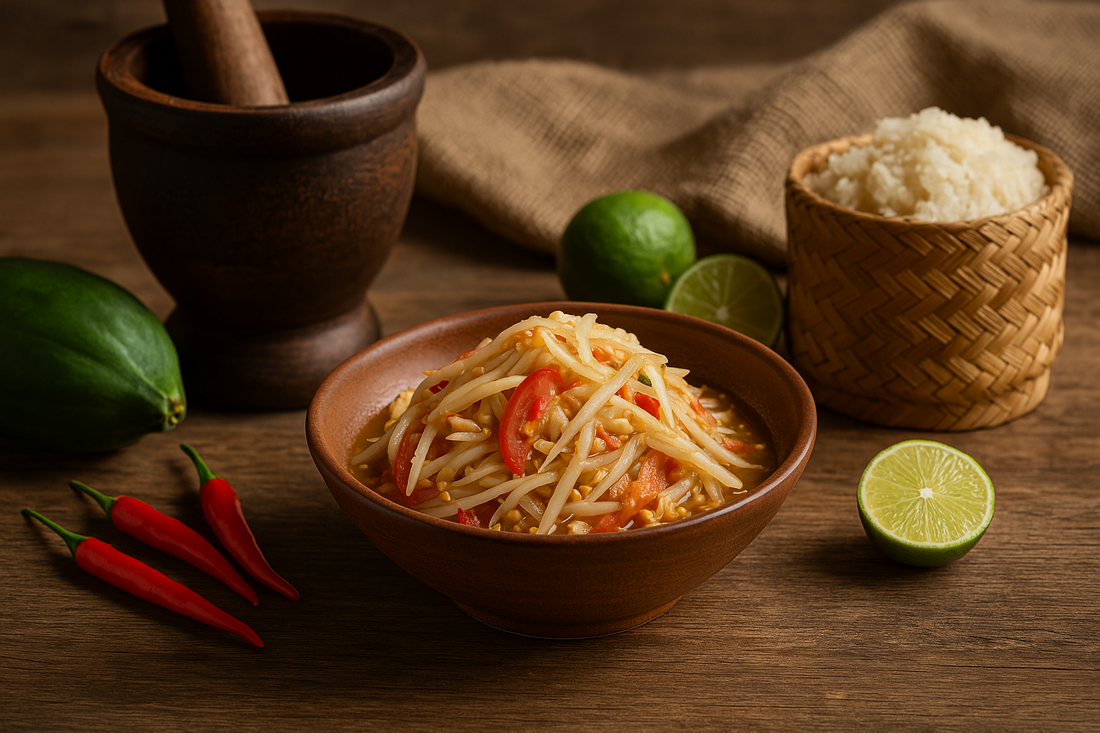Papaya salad, or tam mak hoong, isn’t just a dish—it’s a story of migration, memory, and flavor. Born in the heart of Laos, this vibrant salad has journeyed across Southeast Asia, adapting to local tastes while preserving its soul.
🥄 A Dish Rooted in Ritual
In Lao homes, tam mak hoong is more than food—it’s a ritual. Pounded in a mortar with fermented fish sauce, lime, chili, and shredded green papaya, it’s a bold symphony of flavors that reflect the Lao spirit: earthy, fiery, and deeply communal.
The name itself tells the story: tam means “to pound,” and mak hoong is “papaya.” It’s a dish made with rhythm, patience, and love.

🚂 How It Traveled
As Lao communities migrated—especially into Thailand’s Isaan region—the dish evolved. Thai som tam emerged, often sweeter and less pungent, but still rooted in Lao tradition. Roads, railways, and urban migration helped spread the dish to Bangkok and beyond.
By the 1970s, papaya salad had become a staple in Thai cities, appearing in boxing stadiums, construction sites, and eventually upscale restaurants.
🌍 Today’s Global Plate
From street stalls in Vientiane to trendy cafés in Berlin, papaya salad is now a global favorite. Its versatility and punchy flavor make it a star in vegan menus, fusion bowls, and cultural festivals.
It’s a dish that speaks many languages—but its heart remains Lao.

📚 Coming Soon: The Lao e-Cookbook
We’re thrilled to announce that our Lao e-cookbook—a celebration of heritage, flavor, and storytelling—is almost ready for download!
Inside, you’ll find:
-
Authentic recipes like tam mak hoong, or lam, and khao poon
-
Cultural stories behind each dish
-
Rustic visuals and cinematic prompts to bring Lao cuisine to life
👉 Leave your email below to be the first to receive updates and get early access to the download!
Let’s preserve and share the flavors of Laos—one recipe at a time.

